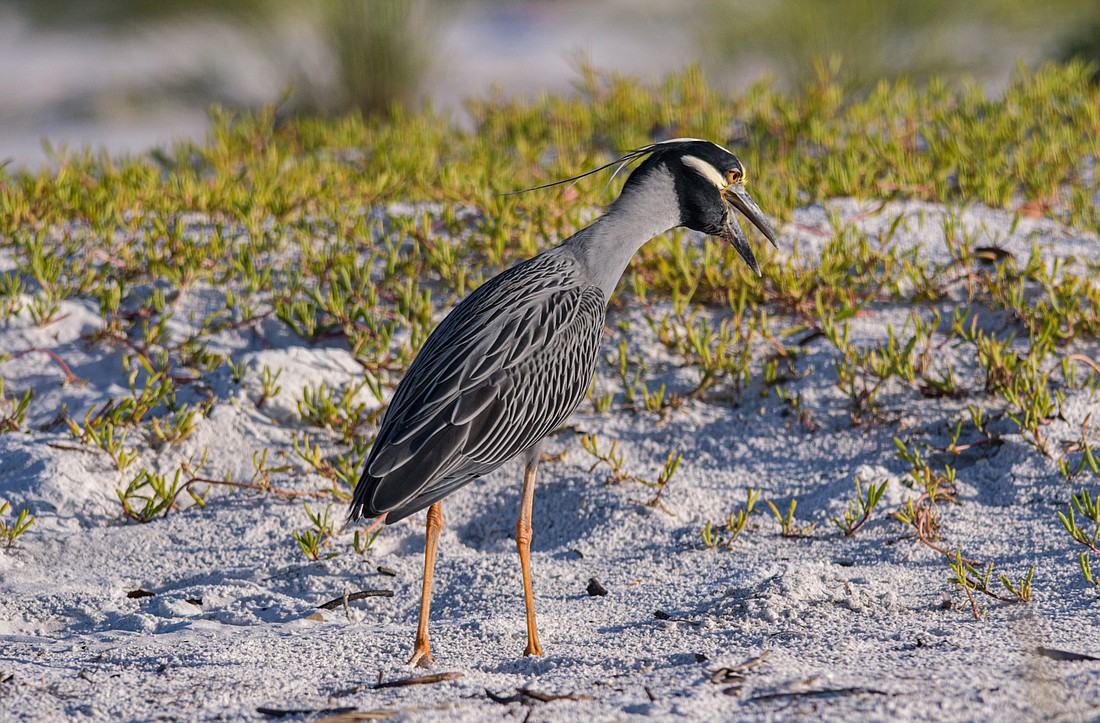- April 8, 2025
-
-
Loading

With their slate-gray bodies, black heads with white cheek patches and their bright namesake crowns, these distinctive herons have long called Sarasota home: The earliest recorded fossil of a yellow-crowned night-heron, found in the Macasphalt Shell Pit (now Benderson Park), is 2 million to 2.5 million years old.
One of two local night heron species (the other being black-crowned night-herons), they are the most specialized crab-eating heron. As an evolutionary response, their bill size varies geographically according to the size of local crabs. Their name implies otherwise, but they are often quite active during daylight hours. Their activity is dictated more by the height of tide, which affects crab fishing, than time of day.
In an interesting illustration of the importance of predatory species for maintaining ecosystem balance, 46 yellow-crowned night-heron nestlings from the Alafia Banks heronry in Tampa Bay were imported to Bermuda in the 1970s. Rather than using poison, the hope was that the birds would help keep the overly abundant land crab populations in check.
Often, transplanting species from one ecosystem to another leads to even bigger ecological problems. However, these yellow-crowned night herons were strategically chosen, as fossil research indicated that a sub-species previously resided on the island, but was hunted to extinction in the 1600s. It was hypothesized that land crab populations had exploded, with dire ecological consequences, because of the removal of these birds, the crabs' natural predators.
And the experiment worked. The return of yellow-crowned night-herons reduced the number of land crabs on the island to sustainable numbers, with other native plant and wildlife species, previously suppressed by the crabs, restored to balance as well.
Save our Seabirds is a non-profit organization whose mission is to rescue and rehabilitate sick and injured birds, releasing as many as they can, while educating our community about avoiding injuries and preserving habitats.